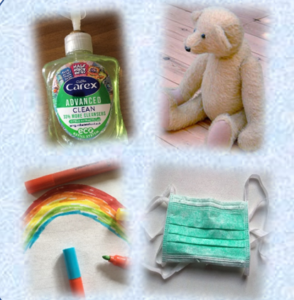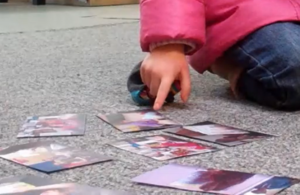This month’s post is written by Dr Lucy Rodriguez Leon. Lucy is a Lecturer in Early Childhood at The Open University. Her research explores young children’s everyday encounters with literacy.
Across the UK there is currently great debate about children returning to schools and early childhood settings. Young children’s lives have been disrupted in ways inconceivable just months ago; it seems safe to say that their experiences of this unique point in history will be varied and diverse. Some may have enjoyed precious, relaxed time with family, making rainbows, going on ‘teddy hunts’ and enthusiastically clapping and banging pans in recognition of the NHS. Other children may have experienced their parents’ anxiety over lost income, some may be hungry, feel isolated, witnessed domestic abuse or be living through bereavement. Yet, no matter how children have experienced the Covid-19 crisis, when they return to their early childhood settings, it seems, now more than ever, that practitioners will need to pay particular attention to really listening to children and helping them make sense of their changing situations.
Practitioners and Early Childhood students will be familiar with the complexities of listening to children. Many will know of Loris Malaguzzi’s (1996) poem, ‘The 100 Languages Of Children’ which eloquently portrays the multiple diverse ways in which children construct, express, contemplate and connect their ideas, thoughts, feelings and understandings of the world. Listening involves so much more than hearing the words that children speak, it includes careful observation, personal connection, empathy and sensitive response and interaction. On the one hand, this can be thought of as an ethos, an ever-present approach to practice (or life) rather than an activity to be planned. Yet, there is also a need to reflect on everyday practices and, at times, be proactive and creative in finding ways to enhance genuine two-way conversation with young children.
Photographs and everyday objects have been used in research to mediate dialogue with young children in unstructured interviews; these approaches also have great potential in everyday situations in early childhood settings.
‘Object mediated dialogue’ draws on the idea that artefacts ,or cultural objects of personal significance hold ‘stories’ and ‘meanings’ for individuals (Woodward, 2016). Providing materials and objects associated with a particular situation can enable young children to express themselves in diverse ways and without the need for specific vocabulary. Handling, playing with, and interacting with such objects surfaces these stories and meanings and can render visible the object’s significance in the child’s life. The reactions it evokes can speak a thousand words and the object potentially creates a focal point for discussion.

Similarly, ‘photo mediated dialogue’ uses images of children themselves or familiar people and situations as stimuli for discussion. There is something powerful and poignant about a still image; unlike video, which takes the viewer on a journey through the episode, the still image holds you in a moment in time to reflect and contemplate. The stillness of photographs offers time and space to construct, re-construct and connect thoughts and feelings on an issue (Pain, 2012). Giving children digital cameras to photograph things that are important to them can be especially empowering as they have a degree of ‘ownership’ of the image.

Creating a ‘Listening Culture’ in which our youngest citizens can express and make sense of their experiences of the Covid-19 crisis must surely be a priority as children return to early childhood settings. Consulting with children has never been more important and there are many creative approaches to enhance the process. Mediating dialogue through personal photographs and cultural artefacts are two useful tools to support meaningful two-way conversation.
References
Malaguzzi, L. (1996). The Hundred Languages of Children: The Reggio Emilia Approach to Early Childhood Education. New Jersey: Ablex Publishing Corporation.
Pain, H. (2012). A Literature Review to Evaluate the Choice and Use of Visual Methods. International Journal of Qualitative Methods, 11(4), 303-319.
Woodward, S. (2016). Object interviews, material imaginings and ‘unsettling’ methods: interdisciplinary approaches too understanding materials and material culture. Qualitative Research, 16(4) 359-374
